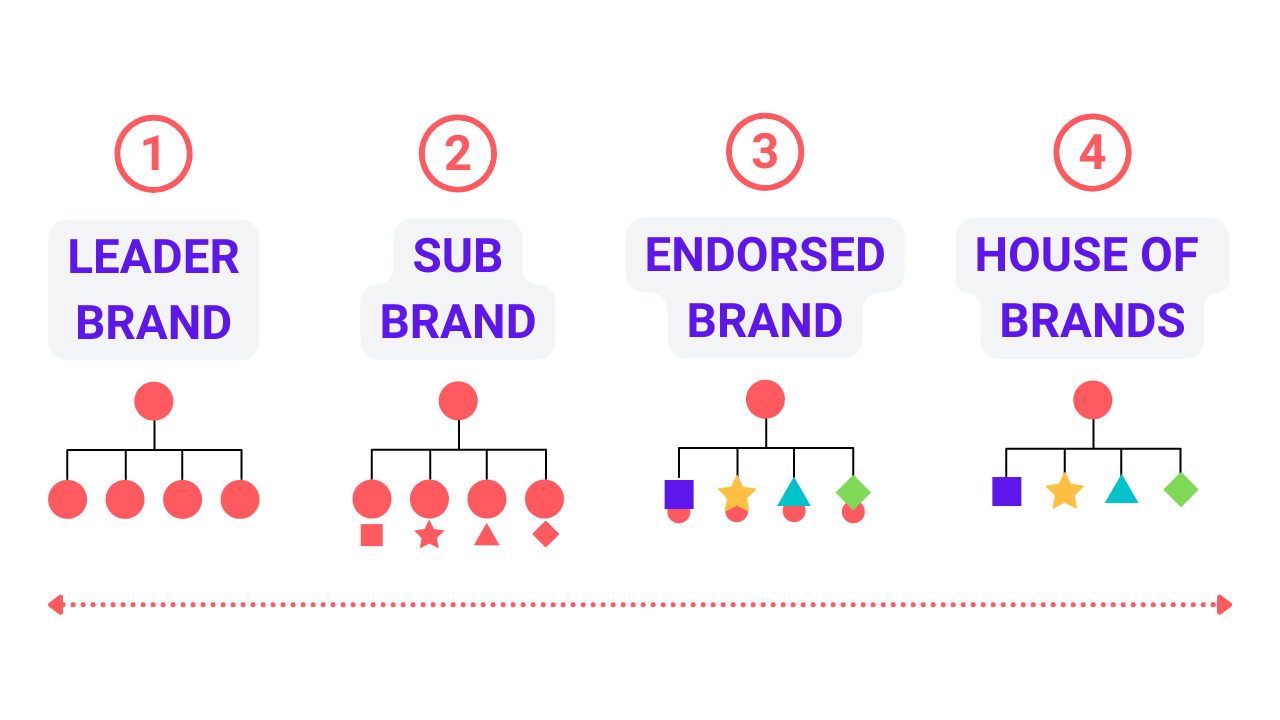
Brand architecture is the organizational framework that defines the structure and relationship between a company’s various brands, products, and services. It provides a strategic blueprint for how brands are categorized, named, and positioned in the marketplace.
Effective brand architecture not only clarifies the brand’s portfolio but also enhances customer understanding, supports business objectives, and drives growth.
This article explores the importance of brand architecture, different types of brand architecture models, and how to design and implement an effective brand architecture strategy.
1. Understanding Brand Architecture
Brand architecture refers to the way a company organizes and presents its brands and products. It helps to define how different brands within a company relate to each other and to the parent brand. A well-structured brand architecture enables clarity and coherence in marketing efforts and enhances customer experience by providing a clear and logical brand hierarchy.
2. The Importance of Brand Architecture
Effective brand architecture offers several benefits:
- Clarity and Cohesion: Provides a clear structure that helps customers understand the relationships between different brands, products, and services.
- Strategic Alignment: Aligns brand strategy with business objectives, ensuring that all brands support the company’s overall goals and vision.
- Efficient Resource Allocation: Helps allocate resources effectively by defining roles and responsibilities for each brand within the portfolio.
- Market Positioning: Strengthens market positioning by clearly defining the unique value propositions of each brand and avoiding overlap or confusion.
3. Types of Brand Architecture Models
There are several common brand architecture models, each with its own advantages:
- Monolithic Brand Architecture (Branded House): In this model, the parent brand is the primary focus, and all sub-brands or products are closely associated with it. The parent brand’s name and identity are used consistently across all offerings.
- Example: Virgin (Virgin Atlantic, Virgin Mobile, Virgin Galactic).
- Endorsed Brand Architecture: Sub-brands have their own distinct identities but are endorsed by the parent brand. The parent brand’s endorsement provides credibility and support.
- Example: Marriott Hotels (Marriott Courtyard, Marriott Residence Inn, Marriott Ritz-Carlton).
- Freestanding Brand Architecture (House of Brands): Each brand operates independently with its own name, identity, and positioning. The parent company’s brand is not prominently featured.
- Example: Procter & Gamble (Tide, Pampers, Gillette).
- Hybrid Brand Architecture: Combines elements of the above models to create a flexible structure that meets specific business needs. This model allows for a mix of monolithic, endorsed, and freestanding approaches.
- Example: Unilever (Dove, Ben & Jerry’s, Lipton).
4. Designing an Effective Brand Architecture
Designing a brand architecture involves several key steps:
- Conduct a Brand Audit: Evaluate your current brand portfolio, including brand names, identities, and market positions. Identify overlaps, gaps, and opportunities for improvement.
- Define Business Objectives: Align brand architecture with your business goals, market strategy, and growth plans. Consider factors such as market expansion, new product lines, or acquisitions.
- Develop Brand Hierarchy: Establish a clear hierarchy that defines the relationships between the parent brand and sub-brands. Determine how brands will be categorized and positioned.
- Create Brand Naming Conventions: Develop consistent naming conventions that reflect the brand architecture and enhance clarity. Ensure that names are memorable, relevant, and aligned with brand identity.
- Design Visual and Verbal Identity: Create or refine visual and verbal elements to ensure consistency across the brand portfolio. This includes logos, color palettes, typography, and messaging.
5. Implementing Brand Architecture
Effective implementation is crucial for the success of your brand architecture strategy:
- Communicate Internally: Ensure that all employees and stakeholders understand the new brand architecture and their roles in supporting it. Provide training and resources as needed.
- Update Brand Assets: Revise brand assets, including logos, packaging, websites, and marketing materials, to reflect the new architecture. Ensure consistency across all touchpoints.
- Monitor and Evaluate: Track the performance of your brand architecture and assess its impact on brand equity, customer perception, and business results. Gather feedback and make adjustments as needed.
6. Managing Brand Architecture Over Time
Brand architecture should be dynamic and adaptable to changes in the market and business environment:
- Review Regularly: Periodically review your brand architecture to ensure it remains aligned with business objectives and market conditions.
- Adapt to Changes: Be prepared to adjust your brand architecture in response to mergers, acquisitions, new product launches, or shifts in consumer preferences.
- Maintain Flexibility: Allow for flexibility within your brand architecture to accommodate future growth and changes while maintaining coherence and clarity.
7. Case Studies and Examples
Examining successful brand architecture examples can provide valuable insights:
- Apple: Apple uses a monolithic architecture where the parent brand is prominent across all products, from iPhones and iPads to Apple Watch and Apple TV.
- Coca-Cola: Coca-Cola employs an endorsed brand architecture with its main brand endorsement extending to sub-brands like Diet Coke and Coca-Cola Zero Sugar.
- Nestlé: Nestlé follows a house of brands model with diverse brands such as KitKat, Nespresso, and Perrier, each operating independently under the Nestlé umbrella.
Conclusion
Brand architecture is a foundational element of brand strategy that impacts how customers perceive and interact with your brand.
By designing a clear and coherent brand structure, you can enhance brand clarity, align with business objectives, and support growth.
Regularly review and adapt your brand architecture to stay relevant and effective in a dynamic market. With a well-defined brand architecture, you can build a strong and recognizable brand presence that drives success.

